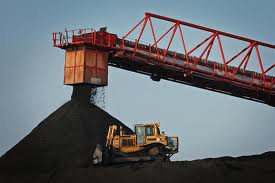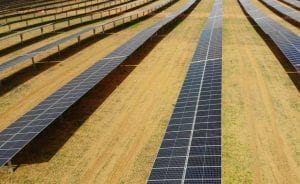It is possibly no coincidence – and not a little ironic – that the bigger losers from Clive Palmer’s declared intention to protect the renewable energy target will be the fossil-fuel generators owned by his greatest political rival, the Queensland premier Campbell Newman.
The Queensland state government has announced its intention to sell its more than 8,000MW of coal and gas fired generation assets, held through Stanwell Corp and CS Energy – neither of which could make a profit last financial year because of the impact of renewables.

Palmer and Newman are bitter rivals, and have had running battles in recent weeks and months and threats of court action.
Stanwell was particularly damming of the impact of rooftop solar on its results – blaming the proliferation of solar modules – there is now more than 1.1GW on Queensland roofs – for its losses.
They and other generators are the most exposed by the anticipated continued fall in wholesale electricity prices that will be caused by an influx of 8,000MW of large scale wind and solar farms – not to mention another 3,000 to 4,000MW of rooftop solar – in Australia out to 2020.
These include generators such as Alinta Energy, and GDF Suez, the owner of Hazelwood brown coal power station in Victoria. The major retailers also own large amounts of generation, but can generally reduce the impact through hedging on retail contracts.
It is not surprising that Stanswell, CS Energy, Alinta and GDF Suez have been the most vociferous opponents of the RET, and have argued that it be brought to an end immediately.
Alinta, whose private equity owners are also seeking a trade sale, argued that “no new renewable energy should be supported under the RET and all new renewable energy projects, whether small or large scale, should be required to compete in the market without subsidy.”
Alinta owns two coal fired generators in South Australia that have been largely sidelined by the now 40 per cent penetration of wind and solar in that state.
CS Energy also called for the RET to be removed, saying its earnings had been “scalloped” by rooftop PV in particular and that existing generators will not be able to compete in the market and risked being stranded assets.
Stanwell Corp called for the RET to be “completely abolished”, saying that wind and solar caused instability to the grid, and citing renewables as the major cause for rising electricity prices (when in fact they have been network investment costs and more recently rising gas prices).
Queensland has installed the most rooftop solar capacity in the country – but this investment has been carried by households and individual business that have installed them at their premises. There has been virtually no investment in large scale renewables in the state in recent years, apart from the delayed 44MW solar boost at the Kogan Creek power station which was partly funded by federal government grants.








